All about patchwork fabrics
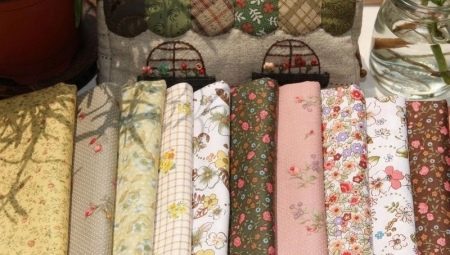
Patchwork or quilting is a sewing technique from shreds. In this style, you can create not only simple things, but also real masterpieces. There are many ways to combine shreds, ready-made patterns that will help to sew a bedspread, bag or even an elegant dress. To learn patchwork, you need to prepare pieces of fabric, tools and a little patience.

Requirements
Material for creativity can be found even at home, using old things that have been idle for a long time. These guidelines will help you avoid embarrassment while sewing:
- clothes need to be ripped, washed and ironed before cutting into shreds;
- to get pieces of the same size that can be easily connected, take a suitable template and circle it;
- choose a material with the same structure and make sure that all colors are combined with each other;
- you can come up with a specific pattern by laying out the pieces like a mosaic to make the work more interesting.
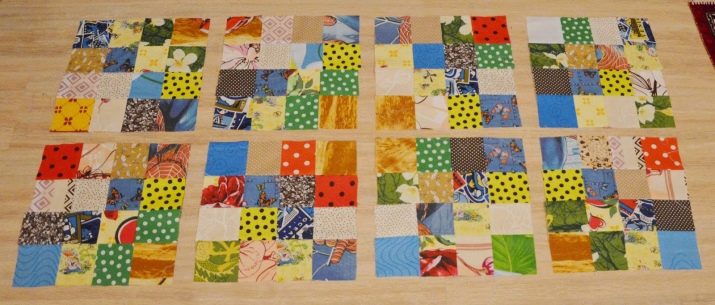
If you don't have suitable old items, you can find the material at atelier or fabric stores.
The remains of the canvases are sold at a good discount, and the scraps can generally be given away for free.
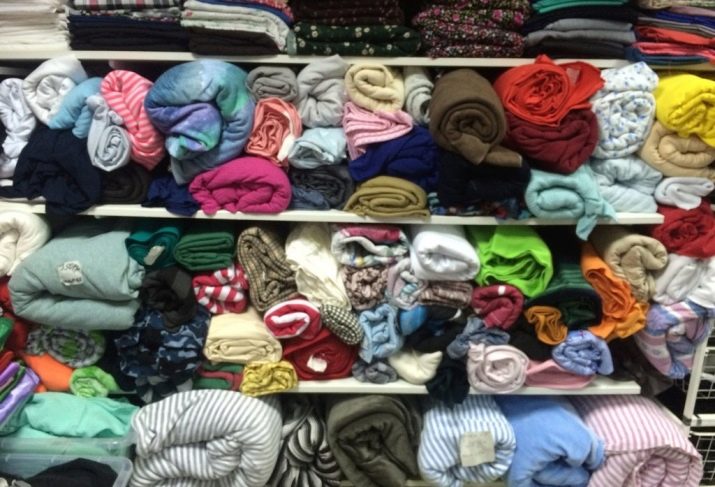
There are also special patchwork kits. This is handy if you don't want to waste time searching. This format is well suited for beginners, since the kit is designed to create a specific product and already contains everything you need in the right amount. Also, a diagram for work is attached to it, so a beginner can quickly figure it out, try to sew something and understand whether he likes this type of creativity.
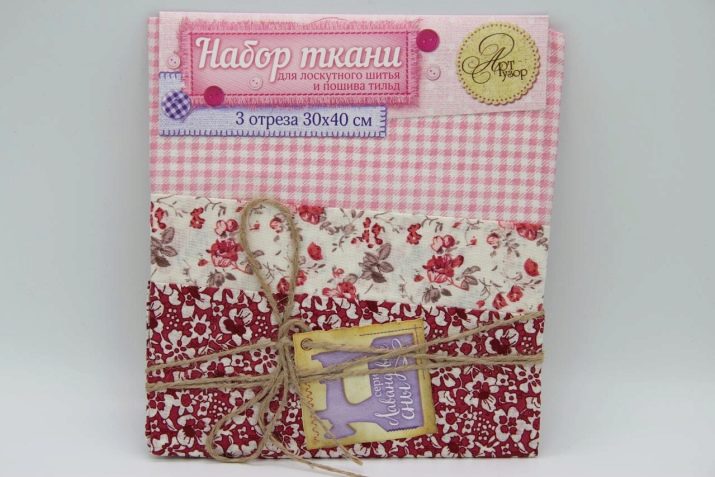
Suitable materials
Experienced craftsmen prefer to use American patchwork fabrics. They are specially designed for patchwork sewing, have a higher density, do not fade for a long time. Besides, catalogs of these fabrics are regularly updated, manufacturers come up with new prints and patterns to provide even more creative possibilities. It is worth noting that among Japanese and European quilting fabrics, you can also find high-quality samples. However, American manufacturers entered the market earlier, so they became more famous.
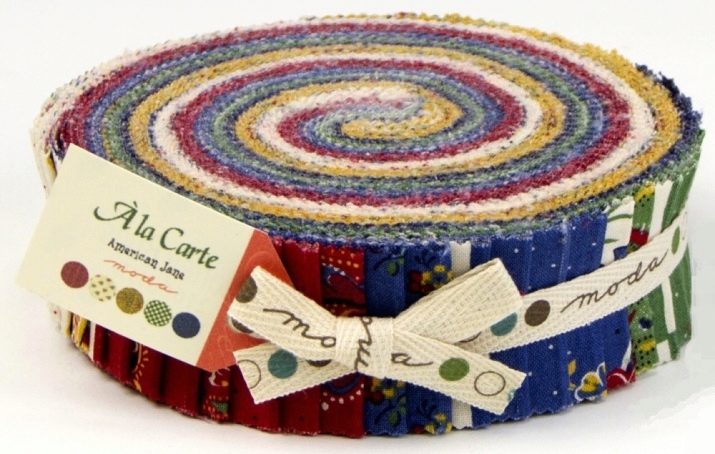
A patchwork kit usually includes heavyweight fabrics such as denim or cotton. It is most convenient to work with them, the flaps are well suited for sewing, do not stretch and do not slip. Products made from such materials can easily tolerate washing and will last longer.
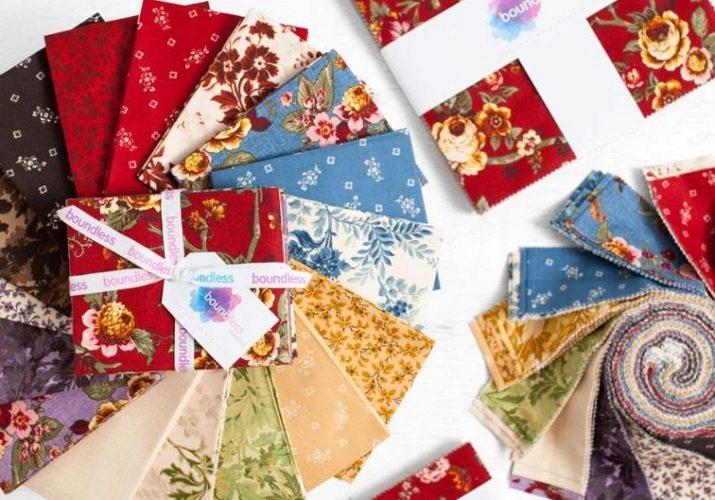
Cotton
Due to their structure, cotton fabrics are best suited for creativity. They have many advantages:
- optimal density, it is convenient to work with shreds even for beginners;
- do not crumble and do not creep on the cut;
- easy to sew and take the desired shape;
- do not fade and do not shrink after washing.
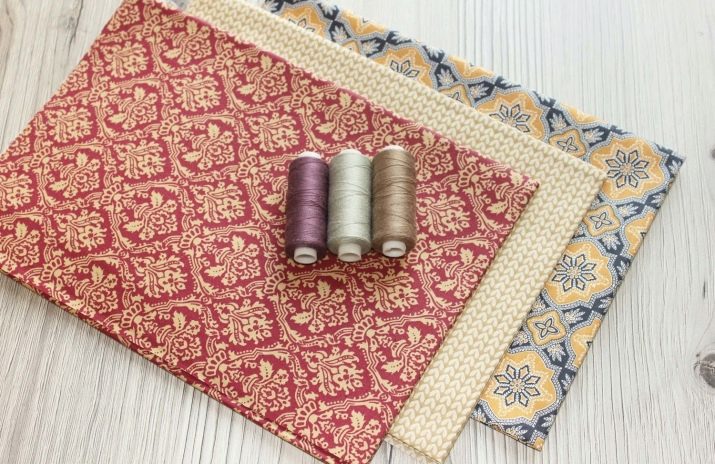
Cotton is suitable for sewing various household utensils: bedspreads, decorative pillowcases, potholders, napkins, chair covers. You can sew a bright patchwork blanket by choosing insulation.
Before work, you need to moisten the material and iron it properly. Then it will not shrink. You can use the steam ironing mode.

Linen
Natural raw materials are an excellent choice, safe and environmentally friendly, in the spirit of modern trends. In addition, linen does not cause allergies and irritation, so products made from it are suitable for people with sensitive skin. There are other advantages:
- the material is highly durable, resistant to wear and tear;
- has air permeability;
- not electrified;
- keeps warm well.
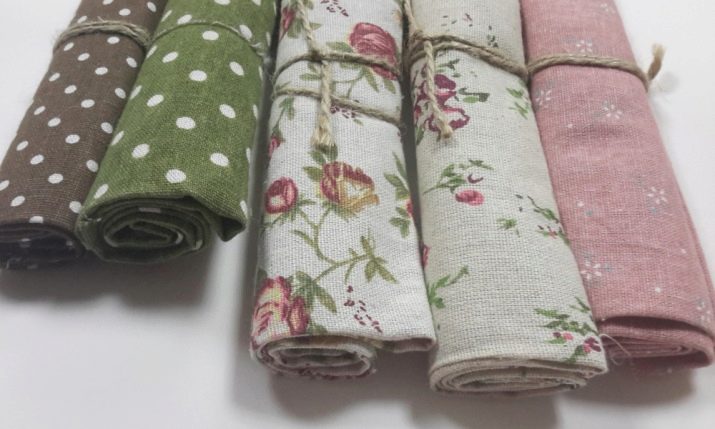
In such canvases, harmful microorganisms and mold do not start, therefore, even with high humidity in the house, you can not be afraid of problems. Various bedspreads, panels, and also clothes are sewn from linen. This material goes well with cotton, so the shreds can be combined with each other.
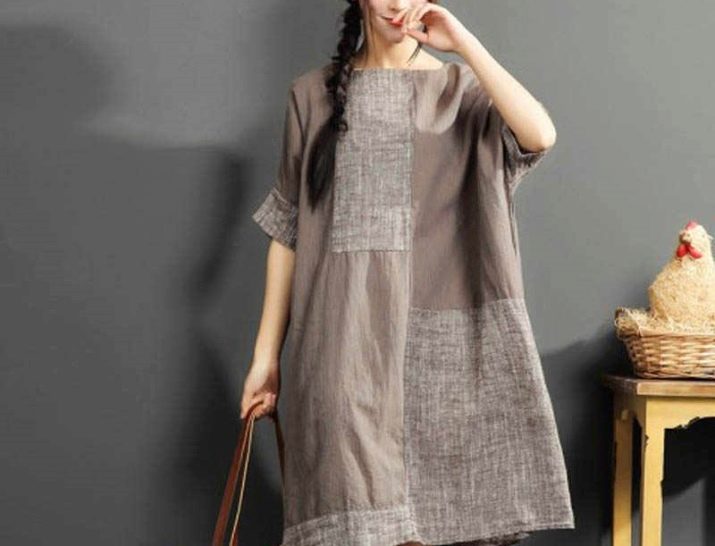
Denim
Thick fabric is a great find for sewing. Many have old jeans in their closets that can be used for creativity. You can sew seat cushions, bedspreads and blankets, bags from the scraps. You can combine denim with other fabrics, then the product will be brighter and more unusual.
If the additions are thinner, use a non-woven liner to even out the pieces in density.
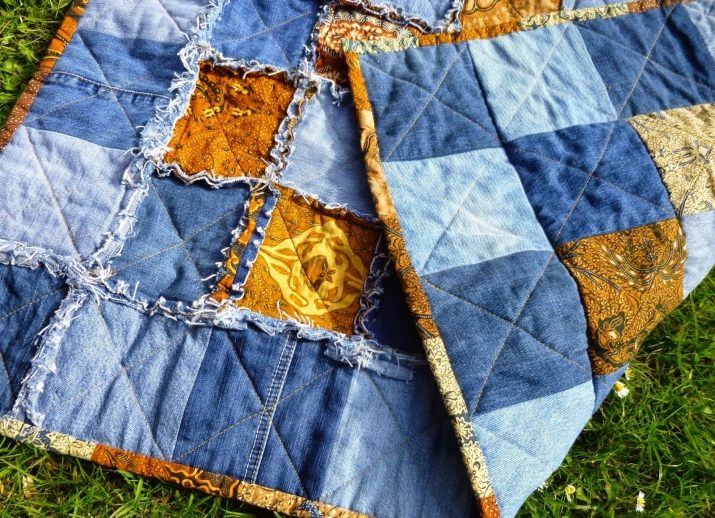
Wool
Woolen fabric is practical and warm. A blanket made of such scraps will warm you in winter and will not be superfluous in everyday life. This material has several advantages:
- due to its high density, it wrinkles less and looks neat;
- the fabric breathes and allows air to pass through, but at the same time retains heat;
- elastic structure allows you to give products the desired shape;
- due to its high wear resistance, things will last a long time.
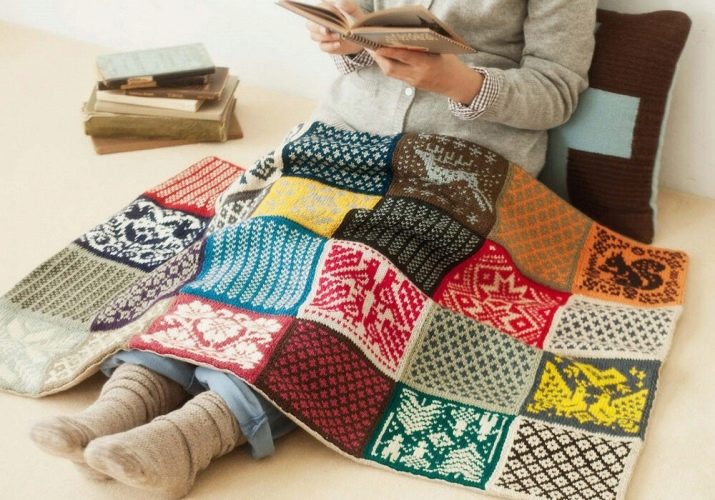
Most often, blankets and bedspreads are sewn from wool, as well as napkins and oven mitts for the kitchen. This is a practical material that shows itself well in everyday life. Wool shreds can be combined with woolen shreds.
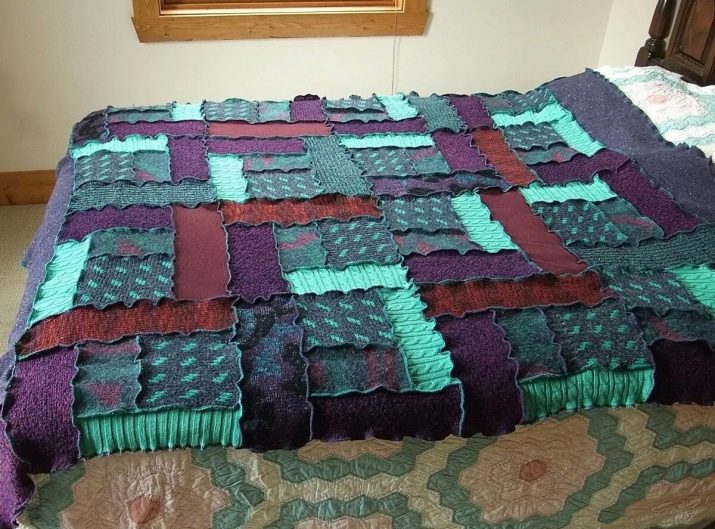
Viscose
The blended fabric is strong enough to make practical household items. Due to the presence of natural fibers, viscose is pleasant to the touch, and synthetic threads extend the life of the fabric.
It should also be borne in mind that some varieties have stretch properties and are slightly stretched. This must be taken into account when sewing and work carefully so that the product does not warp.
Viscose can be combined with cotton or linen - they are similar in density.
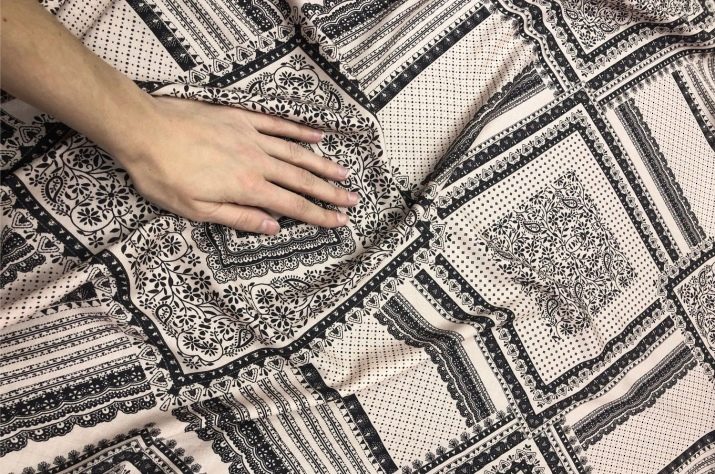
Drape
The material belongs to dense fabrics that retain heat well, so excellent blankets and blankets can be sewn from it.Also, this fabric is useful for creating kitchen utensils: potholders, hot coasters.
Advantages of the drape:
- does not wrinkle and retains a neat appearance;
- not blown out;
- does not fade or fade in the sun.
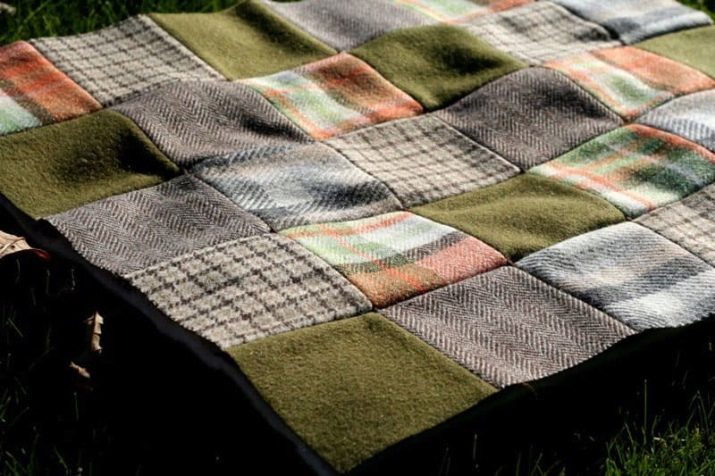
Often this fabric has solid and fairly dark colors, so it can be diluted with brighter woolen patches.to make the product look more interesting. Pieces can not only be sewn together, but also connected by hand knitting - this way the thing will keep its shape longer.
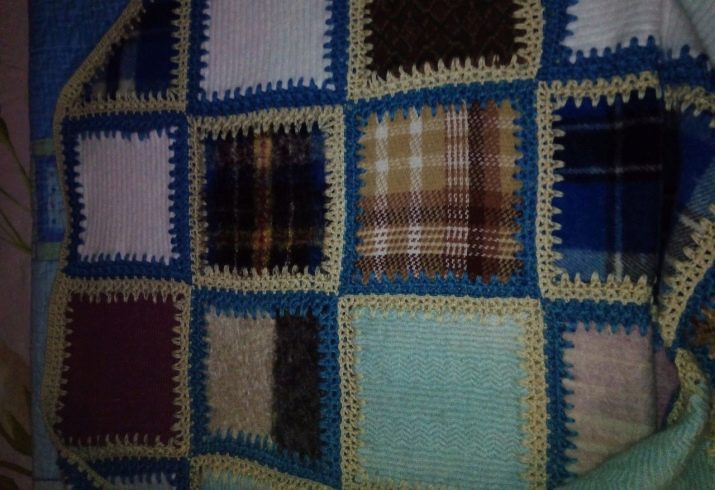
Which is better not to use?
Materials that shrink and fade are not suitable for patchwork.
That is why it is recommended to wash the fabric in warm water before work to see how it behaves.
It is also better not to use fabrics that are too elastic or pleated, since such flaps are difficult to join. Fabrics with metallic threads are not recommended.
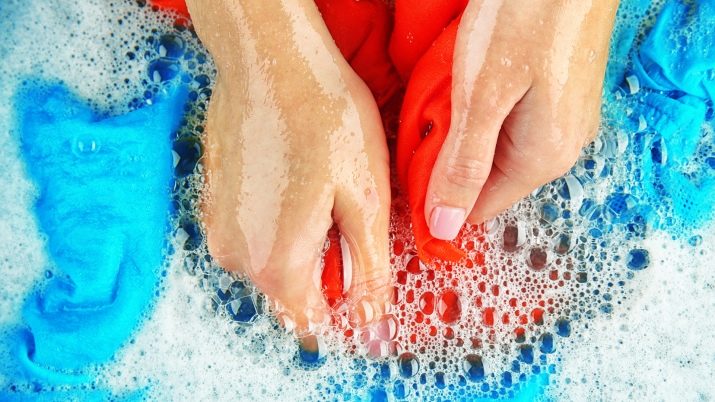
Beginners should not choose satin or silk - they crumble when cut, they can stretch and deform. Fur cuts are also not the best option for the first jobs. However, if you already have enough experience, you can experiment with these materials as well.
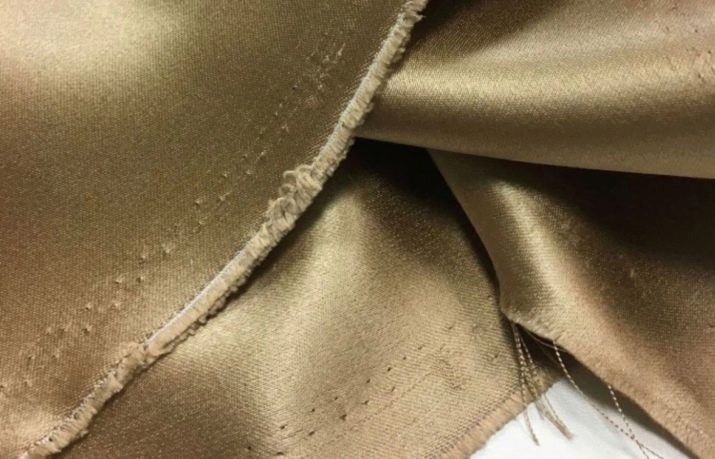
How to match fabrics?
Before starting work, you need to prepare in advance a sketch of the future product and select suitable shreds. They can be combined in color and texture. Try to arrange the pieces in different order to compare the combination methods and choose the most interesting one.
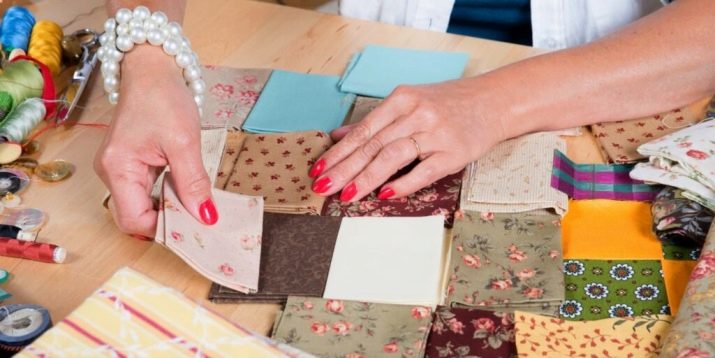
By color and pattern
You can use ready-made palettes and color schemes to find a beautiful combination. Usually artists and designers use such tips, but it is also useful for needlework.
Also worth considering other recommendations:
- calm pastel shades can be complemented with contrasting colors;
- the combination of white and dark tones creates a relief effect;
- Repeating pieces of the same color can become accents if you place them in a specific order.
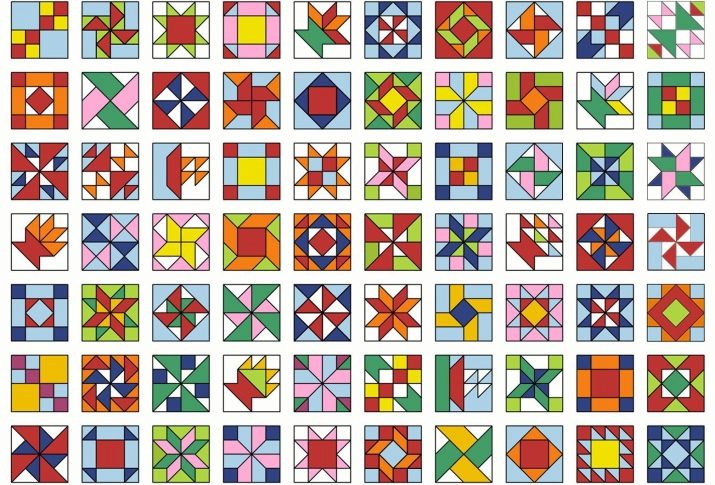
If you are using fabric with prints, it is better to combine the pattern from small to large. In this case, lighter patches are recommended to be placed in the middle, and dark ones - at the edges. You can combine different classic patterns with each other - polka dot fabric, checkered fabric, striped fabric.
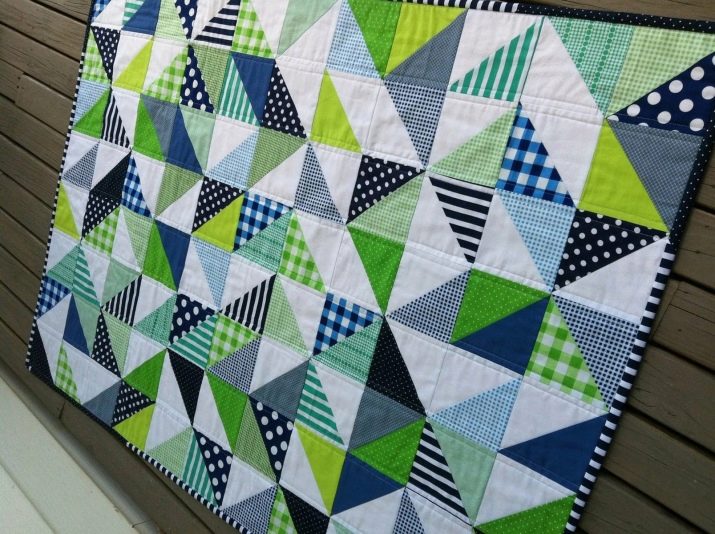
By invoice
The easiest option is to combine similar fabrics. For example, cotton and linen or wool and drape. but you can experiment and combine denim and chintz or velvet and silk, but such creativity also requires appropriate skills in handling fabric.

If the pieces do not match in density, a special lining will help out. There is also a technique in which the shreds are sewn onto a solid canvas that serves as a base - this option is suitable when using thin materials.
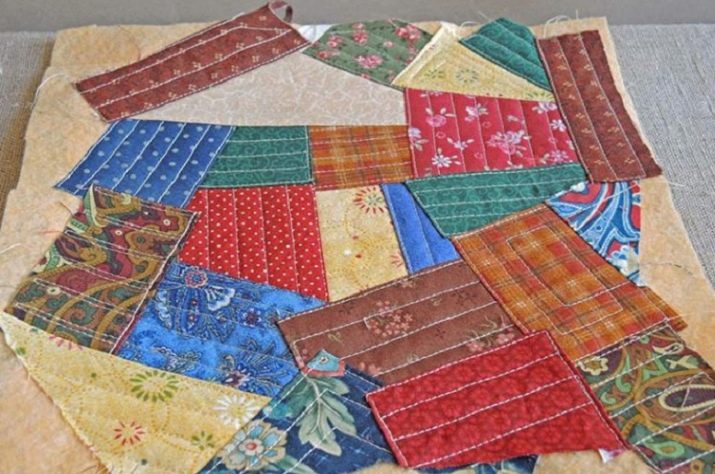
Combination examples
You can use square shreds, joining them into a single piece. This is a simple technique that even beginners can handle. Moreover, this method allows you to create any thing - from clothes to pillowcases. To make the product look more interesting, you can lay out the squares like a mosaic, forming certain patterns.

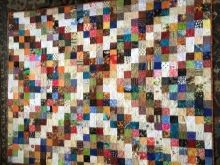
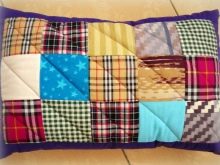
Another option is to use stripes. They are placed horizontally or vertically, diagonally and in zigzags. If you want the thing to turn out more voluminous, you can superimpose the stripes on top of each other.
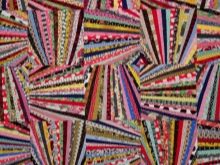
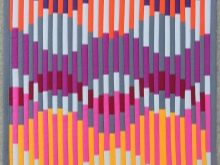
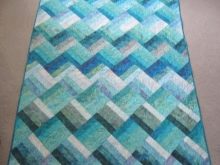
In addition to squares, it is quite easy to connect isosceles triangles together. They can also be used to create a canvas with an interesting pattern.
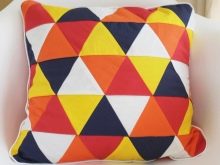
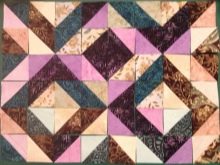
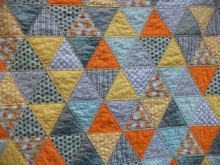
Crazy technique is an option for more experienced craftsmen. Here the shreds differ in shape and size, so you have to think about how best to connect them. Seams can be masked with lace or braid, fringed or embroidered.
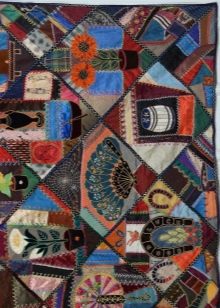
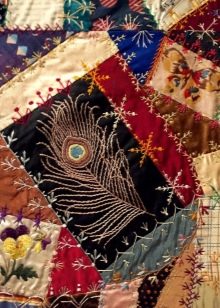

Sewing onto canvas involves using a single piece of fabric as a lining. Against this background, you can lay out an applique from small patches, make an original ornament or a plot drawing.
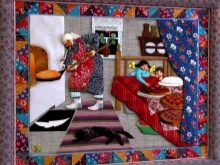

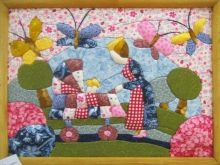
Do not be afraid to experiment with different materials and decor, come up with new combinations and sew unusual things. Patchwork will help you make the interior more comfortable, please your household and create unusual outfits.
You can also find useful tips for choosing fabrics for patchwork in the following video.








